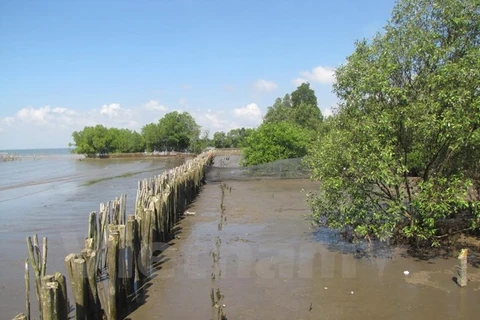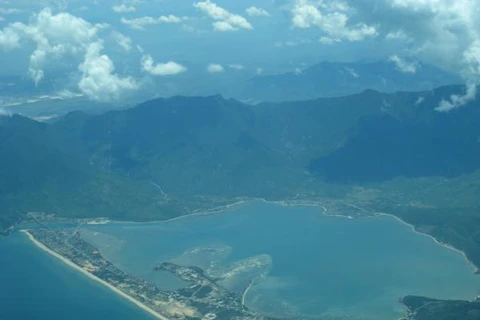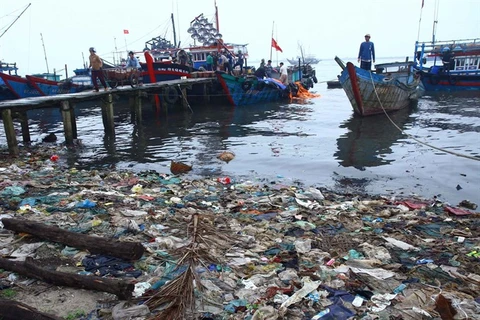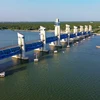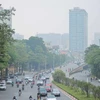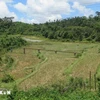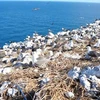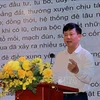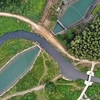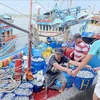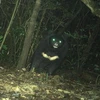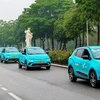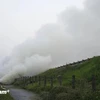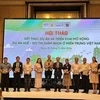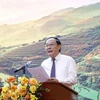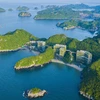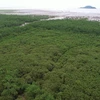HCM City (VNA) - Nearly 60 kilometres away from the centre of Ho Chi Minh City, Can Gio Mangrove has been recognised by UNESCO as a World Biosphere Reserve with primeval forests and abundant floral cover. It was also the sight of a number of glorious battles in the past.
Can Gio Mangrove Biosphere Reserve covers over 70,000 hectares, occupying one-third of Ho Chi Minh City’s total area. It is located in Can Gio district, previously Duyen Hai district. The area is situated in a recently formed estuary complex of tidal flats, where the Vam Co, Sai Gon and Dong Nai rivers discharge into the sea.
Historically, this land, also known as Sac Forest Guerrilla Base, was a key battleground in the two resistance wars against the French and US aggressors.
It had been devastated by US toxic chemicals that turned the zone into an uninhabited land.
After the war ended, the uninhabited mangrove forests have gradually been invigorated and its beauty and magnificence have returned thanks to the hard work of local people.
Tourists to the site are offered an insight into Sac Forest soldiers’ military feats in the past.
Senior Lieutenant Colonel Tran Ngoc Soan, Sac Forest Commando, joined in the war in 1965. “At that time, the forest was full of mangroves and avicennia marinas, not just the mangroves as it is now,” he said.
One year later, the US sprayed toxic chemicals that made the trees die and digging tunnel as base difficult. So, Soan and his comrades had to row a boat to the forest. Since 1967, toxic chemicals have ruined the forest, making it nude. They, as a result, had to travel on foot instead.
Tents and infirmaries have been depicted to make the scene as realistic as possible, moving many of the visiting former soldiers.
Every time returning the base, Lieutenant Vo Duy Tan of Regiment 10 remembered sharing joys and sorrows with his comrades in the hardest time.
Besides facing enemies, Sac Forest commandoes faced unanticipated dangers from crocodiles and shortages of rice and fresh water.
The Sac Forest Military Zone, also known as Regiment 10, was founded in April 1966. During the next nine years, 860 of more than 1,000 soldiers laid down their lives on the field.
From 1962 to 1971, Sac Forest had been nearly destroyed by US weed clearing substances in conjunction with vast deforestation. Since 1985, great joint efforts by Ho Chi Minh City’s authorities and people have been made to reinvigorate thousands of hectares of the forest.
The forest is rich in biodiversity values. There are 52 true and associate mangrove species, 200 animal species, hundred fish and over 40 bird species.
The major habitat types found at Can Gio are plantation mangrove, of which there is about 20,000 ha, and naturally regenerating mangrove, of which there is about 7,000 ha.
A total of 18 mollusc, 27 crustacean, 45 fish and three amphibian species have been recorded at the site. There are anecdotal reports of local farmers shooting an Estuarine Crocodile Crocodylus porosus at the site in around 1990, although there have been no records since then. Also, Dugong has been reported to occur seasonally in sea-grass beds at the site, although these reports have not been confirmed.
The mangrove forest at Can Gio performs many valuable ecological functions, including coastal stabilisation, and protection against coastal erosion, oil spills and storm surges. The mangrove forest is a source of fuelwood and construction materials.
Being close to Ho Chi Minh City, Can Gio Biosphere Reserve has great potential as a site for tourism, public education, scientific research and training. Already, the site receives a large number of visitors from Ho Chi Minh City. It could also serve as a demonstration site for mangrove afforestation projects elsewhere in Vietnam.
Added to this, it has been seen as the city’s “green lung”, contributing to minimising the impacts of climate change.-VNA
VNA

